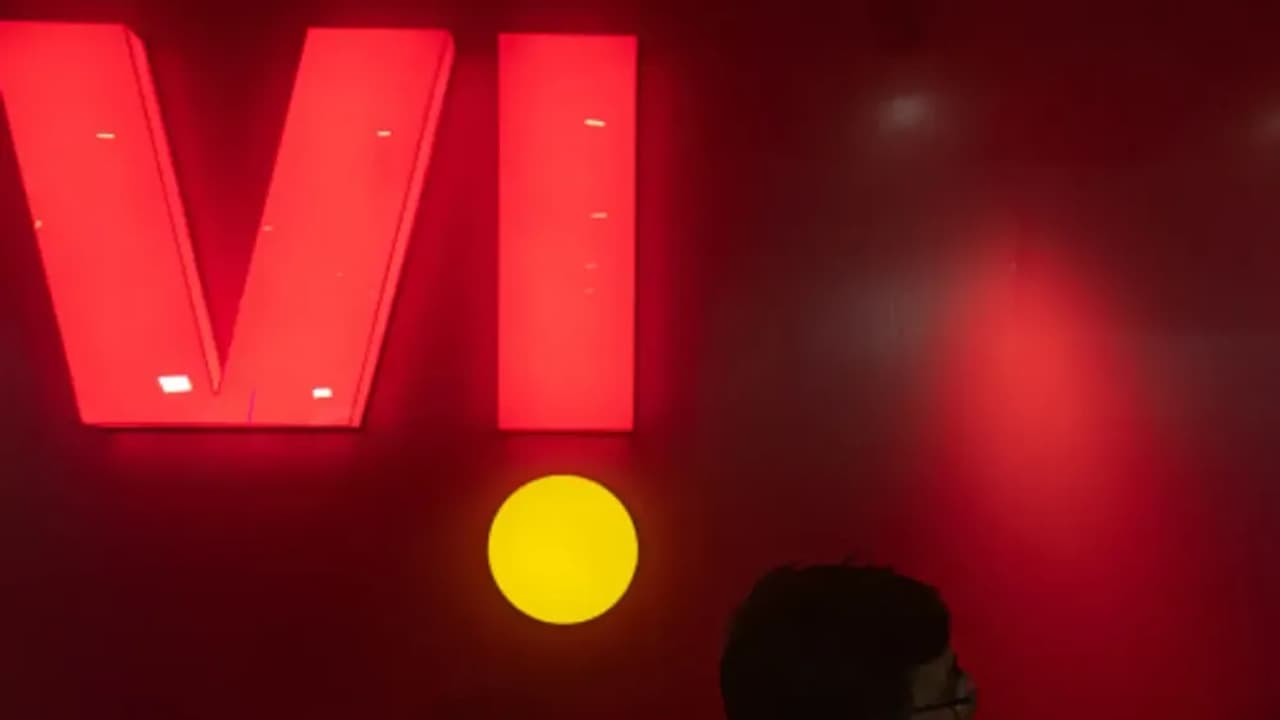The analyst warns that funding delays, debt burdens, and subscriber losses could limit recovery unless fresh capital arrives quickly.
Vodafone Idea shares traded lower on Thursday ahead of its June quarter earnings print. Technicals show bearish pressure, with the stock trading under key moving averages.
What’s the road ahead for this debt-laden telecom company? And how should investors position themselves now? SEBI-registered analyst Deepak Pal lays out three scenarios for the stock and warns of high risk despite revival hopes.
Technical Outlook
On the daily chart, Vodafone Idea stock is consolidating with fresh downside pressure. Wednesday’s trade indicated follow-through bearishness. He noted that prices remain firmly below 14-day, 55-day, 100-day, and 200-day Exponential Moving Averages (EMAs), reflecting a sustained downtrend.
Momentum indicators such as the Moving Average Convergence Divergence (MACD) remain negative and the Relative Strength Index (RSI) near 32–33, signals near-oversold territory, but does not indicate a clear reversal yet.
Pal said that a weak bounce attempt may attract sellers, but a sustained breakout above ₹7 might warrant cautious optimism.
Fundamental View
He highlighted that Vodafone Idea continues to grapple with extremely high debt, struggling profitability, and low margins. In a rescue measure, the government has converted ₹36,950 crore in deferred dues into equity, increasing its stake to 48.99%. And reports suggest that additional government support, such as extended repayment terms or interest restructuring, is under consideration to prevent collapse.
What’s Vodafone Working On?
The telecom major has launched 5G services in cities like Delhi NCR, Mumbai, and Patna, with plans for all 17 circles by August 2025. Vodafone Idea has launched bundled 5G + OTT content offers in partnership with Vivo to boost subscriber retention.
It has also collaborated with AST SpaceMobile to deliver satellite-based direct-to-device (D2D) broadband, although regulatory and technical hurdles may delay deployment, Pal noted.
Additionally, it is exploring partnerships with Starlink to serve rural areas that are currently underserved.
And in recent news, the company signed a PPA and share purchase agreement to invest in a 4 MW captive solar project in Maharashtra via Aditya Birla Renewables SPV.
What Should Investors Do?
For short-term traders, Pal suggested that given the extended downtrend and fragile technicals, it’s better to avoid leverage. Instead, watch for decisive signs of bottoming.
For long-term investors who view Vodafone Idea as systemically important to Indian telecom infrastructure, with ongoing government support and potential for revival, selective accumulation at lower levels may yield multiyear upside, but only at very low entry points with clear risk controls.
Pal laid out three scenarios for the stock going ahead.
Optimistic Scenario (Successful Turnaround): This would require fresh equity & debt funding of ₹20,000–₹25,000 crore secured on time. Other factors at play would include completion of 5G rollout in 17+ circles within 12–18 months, a rise in ARPU (Average Revenue Per User) to ₹200+, and partial waiver or rescheduling of government dues.
In such an optimistic scenario, it is likely to see improvement in revenues, EBITDA growth, market sentiment, and a likely re-rating. Pal identified the target at ₹14–₹18 in the next 18–24 months under such circumstances.
Base Case (Slow & Partial Recovery): This scenario would occur if the company’s funding is delayed or received in smaller tranches. The 5G rollout is slower (10–12 circles in 2 years), with ARPU around ₹180 and some subscriber stabilization, but still losing market share to Jio/Airtel.
In such a scenario, the expected impact would be occasional news-based spikes and a gradual debt reduction timeline. In that case, the stock is likely to move to ₹9–₹12 in the next 18–24 months.
Worst Case (No Significant Improvement): This scenario would occur if Vodafone Idea’s funding were significantly delayed or failed to materialize. Along with this, if there are significant delays in 5G rollout, ARPU stays below ₹160, and it continues to see a high subscriber churn. Additionally, the government support remains minimal, and only at survival levels.
In such a weak scenario, it risks weak sentiment, long-term underperformance, with the stock likely being stuck in a low trading range of ₹5–₹6.50 in the next 12–18 months.
Pal highlighted that these projections heavily depend on market sentiment, macroeconomic conditions, telecom policy, and execution speed. He views Vodafone Idea as a high-risk, high-reward investment, suggesting you allocate only a small portion of your portfolio to it.
Vodafone Idea shares are down 20% year-to-date (YTD).
For updates and corrections, email newsroom[at]stocktwits[dot]com.<
